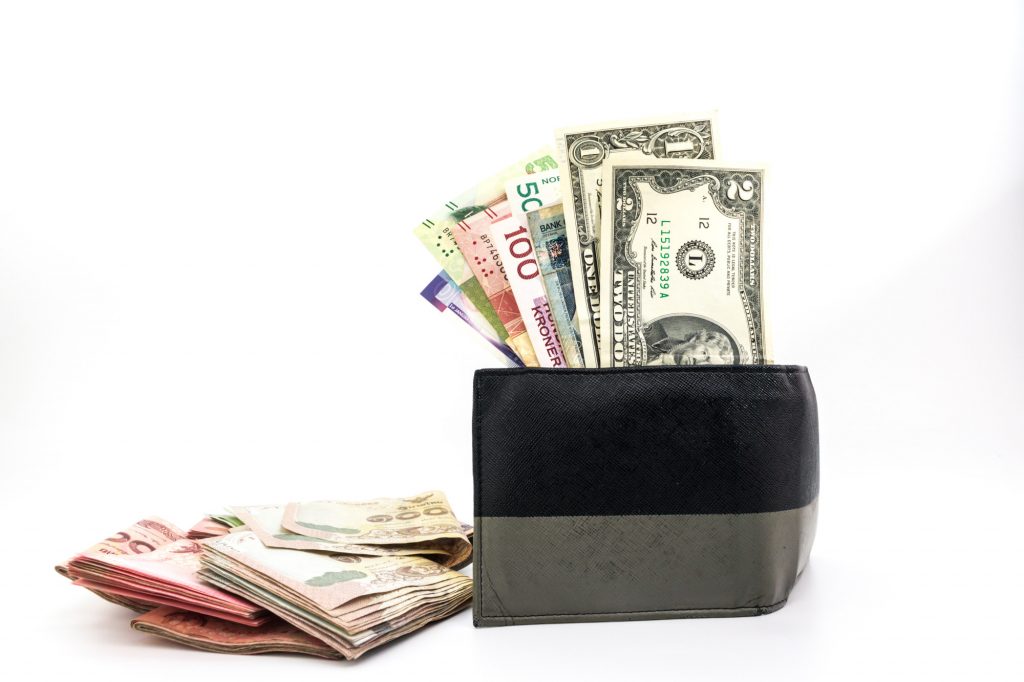There were several time periods, throughout the 19th century, when the value of the Canadian dollar was fixed in relation to the American dollar. The Bank of Canada was in charge of manipulating the market to make sure that it could control the value of the currency.
Today, however, that’s no longer the case. When it comes to currency exchange, the rate between Canadian money and the currency of any other country is determined by the market forces of supply and demand. This is similar to the value of any openly traded service or product.
Understanding the value of your home currency in relation to a different country’s currency can help you analyze assets that are priced in foreign dollars. For example, if you’re an American who is planning on taking a trip to Canada or investing in the country, then it’s very helpful to understand the exchange rate.
A weaker American dollar could increase the value of Canadian investments while an increasing dollar value could hurt your investments in a country like Canada.
The Canadian-American currency exchange rate is constantly fluctuating due to a variety of factors. Let’s take a further look into those factors below.
Factors That Influence Exchange Rates
A floating exchange rate is determined by the supply and demand in the market. How much supply there is in relation to the demand of a currency is going to affect the value of one currency in relation to another.
For example, if the demand for Canadian dollars by Americans goes up, then the supply-demand relationship will lead to an increase in the price of the Canadian dollar in relation to the American dollar.
There are all kinds of economic and geopolitical announcements that alter the exchange rates between two countries. Some of the most common announcements include manufacturing data, gross domestic product numbers, inflation reports, unemployment rates, and interest rate changes.
A short-term move in a floating currency exchange rate has to do with disaster, rumors, speculation, and everyday supply and demand for the money. If there is more supply than demand, then the currency’s value decreases. If the demand is higher than the supply, then the value of the currency will become stronger.
If there are extreme short-term moves, then a central bank might intervene. Because of this, governments and central banks might step in if the value of a currency becomes too low or too high, even though most currencies are considered to be floating.
Interest Rates
When Canada has relatively high interest rates, the demand for Canadian dollar-denominated securities by foreign investors will likely increase. However, the rate of return for a foreign investor is going to depend on the expected future performance of the Canadian dollar.
If an investor thinks that the Canadian dollar will decline in value, then they will demand a higher interest rate on Canadian dollar securities.
Commodity Prices
The Canadian dollar’s value is correlated to the strength of world commodity prices. Commodities make up a bigger share of exports in Canada compared to other countries, including the United States.
When the prices for commodities go up, the terms of trade in Canada will improve. This is because its products have become relatively more valuable.
Because the effective purchasing power will be higher for Canada, this movement is going to mean a higher exchange rate.
The opposite is also true. When there are lower commodity prices, this can mean a weaker Canadian dollar.
Inflation Rates
The rate at which general price levels go up over time is known as inflation. If the inflation rate in America were to be higher than foreign inflation rates, then this would weaken the purchasing power of American currency in relation to foreign currencies.
This reduction would be seen in a relative decline in the value of American currency. The opposite is also true in this situation. Relatively low, sustained inflation in America will have a positive influence on the exchange rate.
International Trade of Goods and Services
When a country ends up with a trade surplus, this means that they have more exports than imports. This puts upward pressure on the exchange rate and the demand for the currency starts to exceed the supply.
When a country’s imports exceed exports, it is said to have a trade deficit. This puts downward pressure on the exchange rate and the supply for the currency will exceed the demand.
Productivity
A country’s productivity is measured by how much output it can produce with a certain amount of inputs. This can be a factor in determining the exchange rate between countries like Canada and America because of productivity’s effect on international competitiveness and relative prices.
For example, if Canadian productivity were to grow faster than in the US, the prices for Canadian products would become more competitive. As time went on, Canadian exports and output would likely increase, leading to more demand for Canadian currency.
The Importance of Knowing How the Canadian-American Currency Exchange Rate Is Determined
Hopefully, after reading the above article, you now have a better understanding of how the Canadian-American currency exchange rate works.
It’s not always easy to wrap one’s head around the workings of international markets and currency exchanges. However, by better understanding the factors that go into currency exchange rates, you’ll be more prepared to make currency exchanges for your investments and travel plans.
Are you looking for an efficient and affordable way to exchange currency? Contact us today and see what we can do for you!





